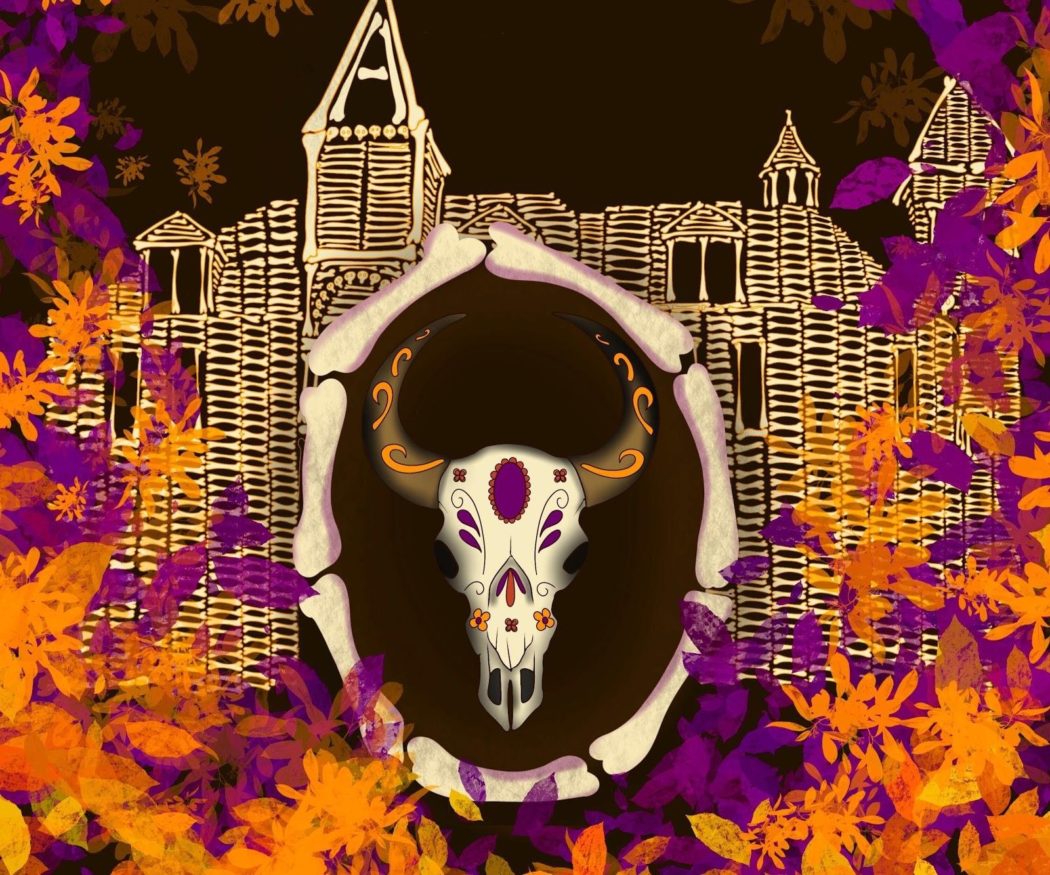USU honors ‘Dia de Los Muertos’ or ‘Day of the Dead’
Dia de Los Muertos, or Day of the Dead, is a traditional Mexican holiday celebrated on Nov. 1 and 2. It is often confused with the Catholic All Saints’ and All Souls’ Day as well as Halloween but there is no affiliation. Day of the Dead stems from thousands of years of traditions, long before these other holidays.
The holiday centers on the belief that during the first two days of November, the veil between the spirit and physical world is lifted. Deceased souls are allowed to return to their families on earth for two nights of feasts. It celebrates the beauty of life’s fragility, the strength and importance of family bonds, and death.
The Aztecs first began this tradition in their festivals of worship to the goddess of death, Mictecacihuatl, who presided over the underworld, Mictlán, with her husband. Mictlán was envisioned as a peaceful place of rest and death was just another stage of life. Original Aztec celebrations occurred in the ninth month of their calendar — most likely June or August today — and included human sacrifice. With the arrival of Catholic Spanish conquistadors, the traditions were changed to fit the colonizers’ beliefs. Human sacrifice was done away with and the dates moved to coincide with All Saints’ and All Souls’ Day, which is why it is often confused with them.
Today, Day of the Dead is observed through building ofrendas, or altars. These ofrendas are covered with symbolic candles and orange marigold flowers, also known as cempasuchiles. The lights, bright colors and strong scents are believed to guide the souls on their journey from the spirit world. Photos of deceased loved ones are set up so the souls know they are welcome. To top it off, there are often sugar skulls, or calavera, and things the deceased enjoyed in life such as food, drinks, instruments and toys.
At night, the candles are lit and families gather for large feasts. These dishes differ from family to family, the holiday emphasizing personal family preferences, but pan de muertos, or bread of the dead, is often served.
Day of the Dead is celebrated all throughout Mexico and North America, including at Utah State University.
On Monday, Nov. 2, the LatinX Student Union set up a large ofrenda in front of the Taggart Student Center fountains. As any traditional ofrenda, they covered it with marigolds, baskets of bread, water and other special beverages, candy skulls, dolls and instruments. There were even two toy skeletons holding hands and kissing atop a miniature A stone to honor USU.
What set this ofrenda apart, however, were the framed photos placed on the altar. They were all Latinos who had died in the United States due to COVID-19. Many of them were from Cache Valley, while others were from across the nation. Club member Luz Maria Carreño explained they decided to honor these people as a way of showing their respect for victims of the pandemic which has affected so much of daily life. It has even affected the LatinX club.
In past years, the club has honored Day of the Dead with a procession around campus, complete with costumes, banners, music and dancing. Due to less people on campus and large group restrictions, the procession was replaced with the ofrenda. This way, they could still celebrate the holiday in an interactive way while adhering to public health guidelines.
Monday afternoon, club members Luz Maria Carreño and Cecilia Vargas managed the ofrenda and discussed their personal connections to the club and holiday.
For Carreño, this is the first year in a while her family has built an ofrenda because, as she explained, many immigrants, like her family, feel they must leave their culture behind to start a new life.
Luckily USU is an exclusive place where heritage and culture is something to be celebrated and shared rather than hidden.
“Being a part of LatinX has really allowed me to connect to my culture in ways I haven’t been able to before.” Carreño said.
For Vargas, the holiday was a special time for her family while they still lived in Mexico. Their tradition was going to the cemetery to visit loved ones and setting ofrendas there. Now, they build small ones in their home as a way to still connect to their heritage.
From Monday, Nov. 2 to Friday, Nov. 6, the Nora Eccles Harrison Art Museum similarly honored Day of the Dead. In the front lobby, they set up a large ofrenda with marigolds, skulls, food, toys and photos. Marigold stickers paid homage to the holiday folklore by making a path on the floor from the door to the altar, just as the flowers are said to guide souls between worlds.
To encourage interaction, a stand was set up next to it which allowed people to write the names of deceased loved ones and place it up on a wall to display.
Regardless of your heritage, Day of the Dead is an opportunity to remember lost loved ones and celebrate life.
*Graphic by Sadie Buhman.
 Dara Lusk was born and raised in northern Virginia outside of Washington, DC. She is majoring in English with an emphasis in Technical/Professional Writing and a minor in Anthropology. When not writing she loves reading and annotating classic literature.
Dara Lusk was born and raised in northern Virginia outside of Washington, DC. She is majoring in English with an emphasis in Technical/Professional Writing and a minor in Anthropology. When not writing she loves reading and annotating classic literature.
@dara_marie_

